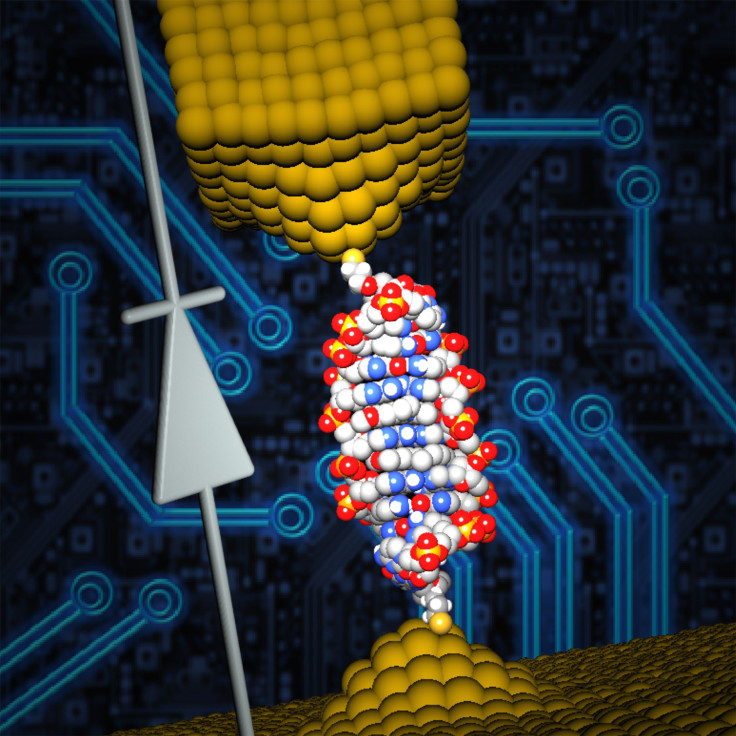Scientists Create World’s Smallest Diode Using A Single Molecule Of DNA

In a development that may eventually lead to nanoscale electronics orders of magnitude smaller than those currently in use, a team of researchers from the University of Georgia and Israel's Ben-Gurion University of the Negev announced Monday it has developed a diode made from a single DNA molecule.
Diodes are electronic devices that allow current to flow easily in one direction, while blocking current in the opposite direction. These devices, usually made using semiconductors, are most commonly used as voltage regulators and to convert alternating current to direct current.
This particular diode, described in a study published in the journal Nature Chemistry, is made of just 11 DNA base pairs, making it the tiniest one ever created — much smaller than an earlier one made using a single molecule of thiophene 1,1-dioxide.
“For 50 years, we have been able to place more and more computing power onto smaller and smaller chips, but we are now pushing the physical limits of silicon,” lead author Bingqian Xu from the University of Georgia said, in a statement released Monday. “If silicon-based chips become much smaller, their performance will become unstable and unpredictable.”
A DNA molecule is made up of two separate nitrogen base pairs — Adenine and Thymine, Cytosine and Guanine — connected via hydrogen bonds. In its normal form, a DNA double helix does not act as a diode. But, when a small molecule called coralyne is inserted into specific points within the molecule, its behavior changes “drastically,” the researchers said.
After this molecule was inserted, the researchers found that the DNA molecule allowed a current 15 times stronger in one direction — essentially functioning as a diode.
“This finding is quite counterintuitive because the molecular structure is still seemingly symmetrical after coralyne intercalation,” Xu said in the statement.
© Copyright IBTimes 2025. All rights reserved.






















